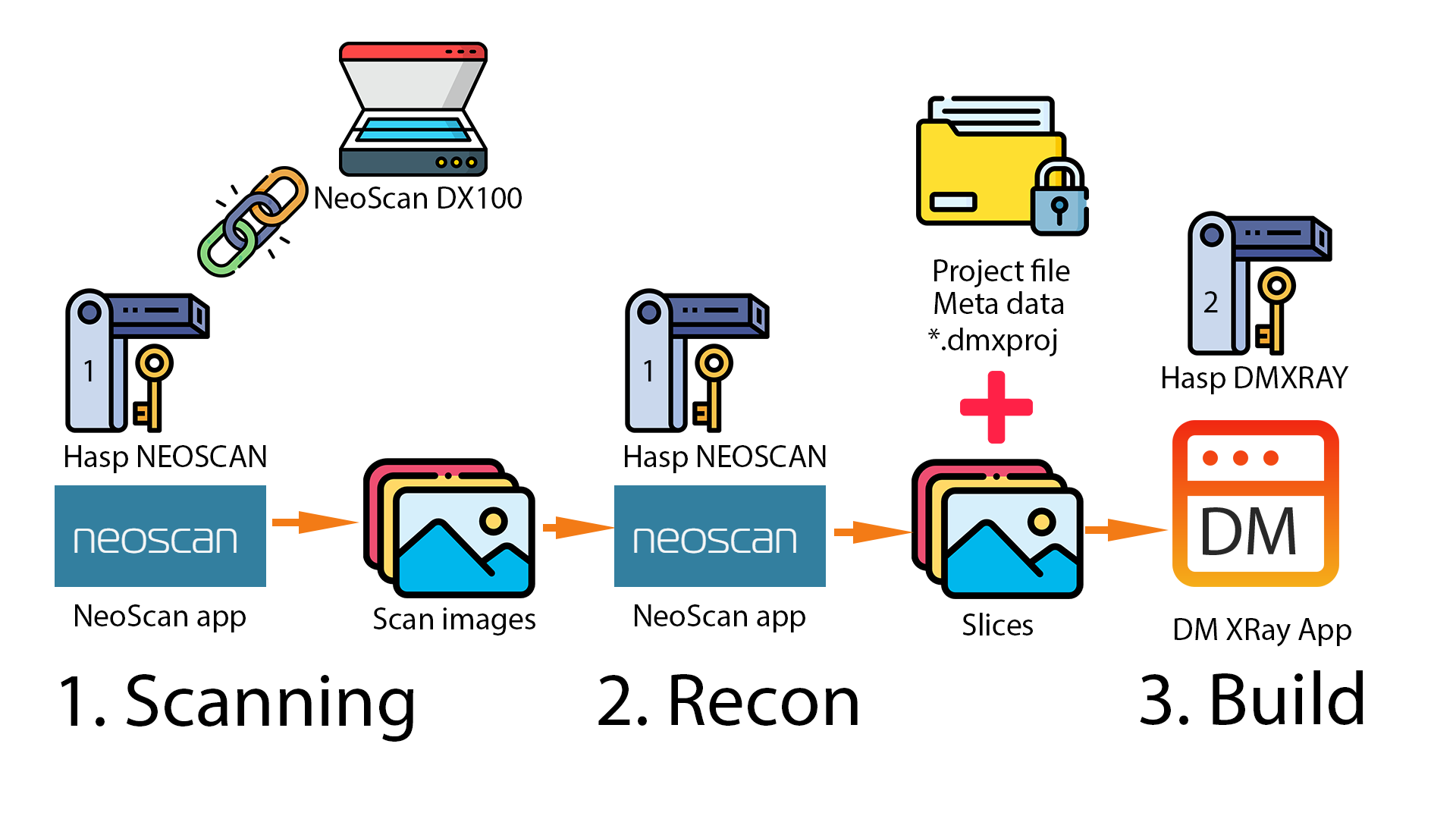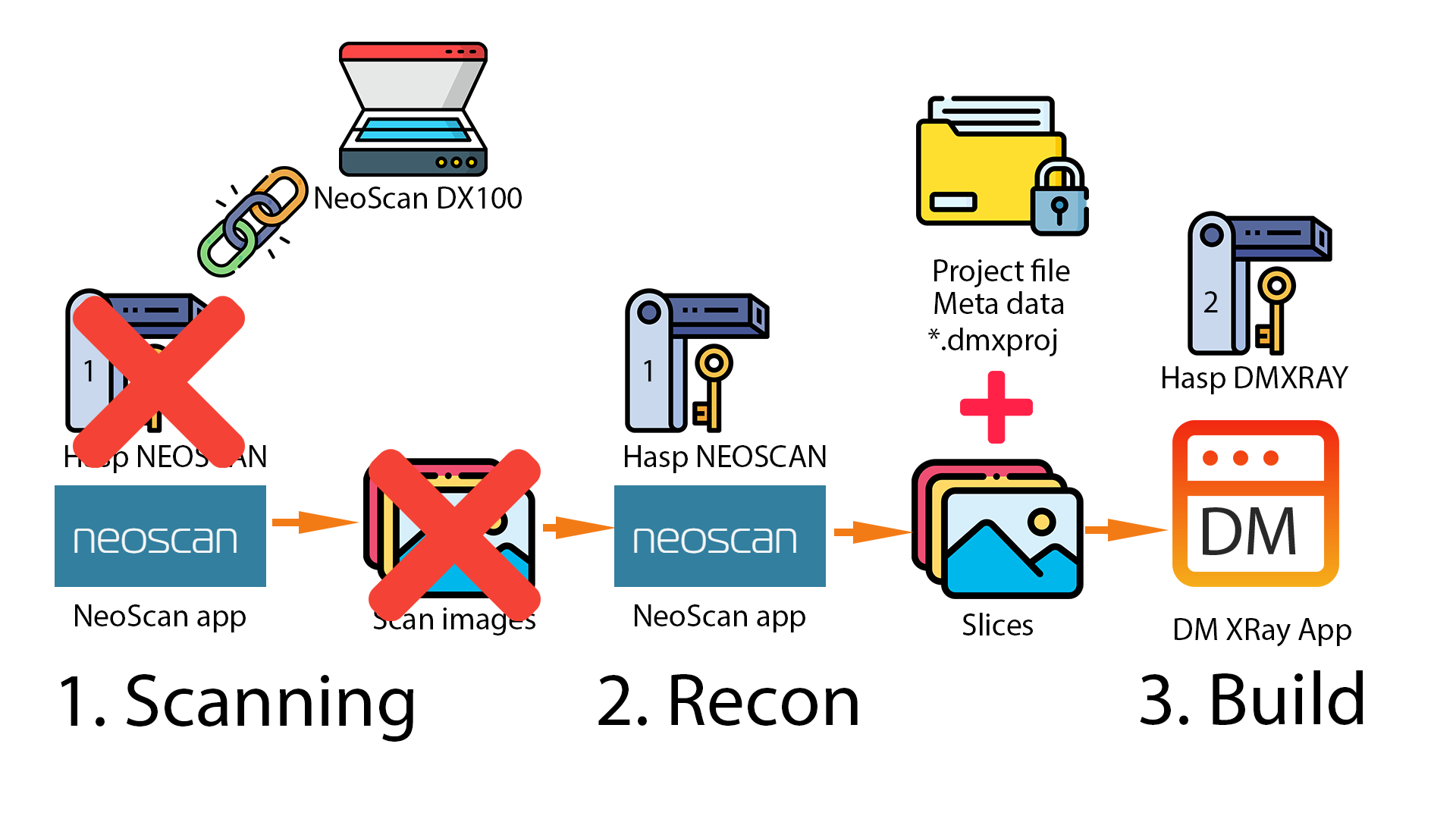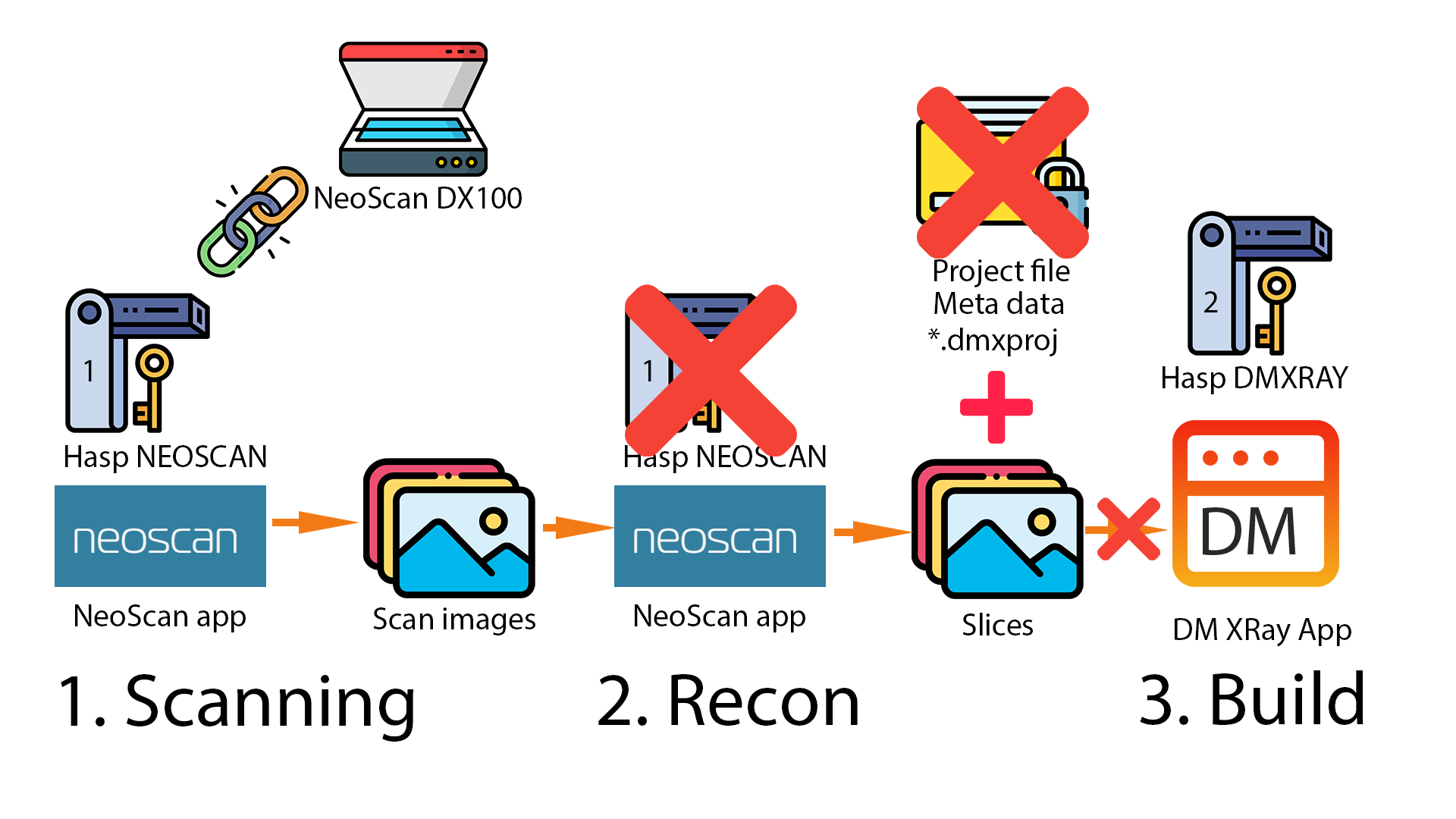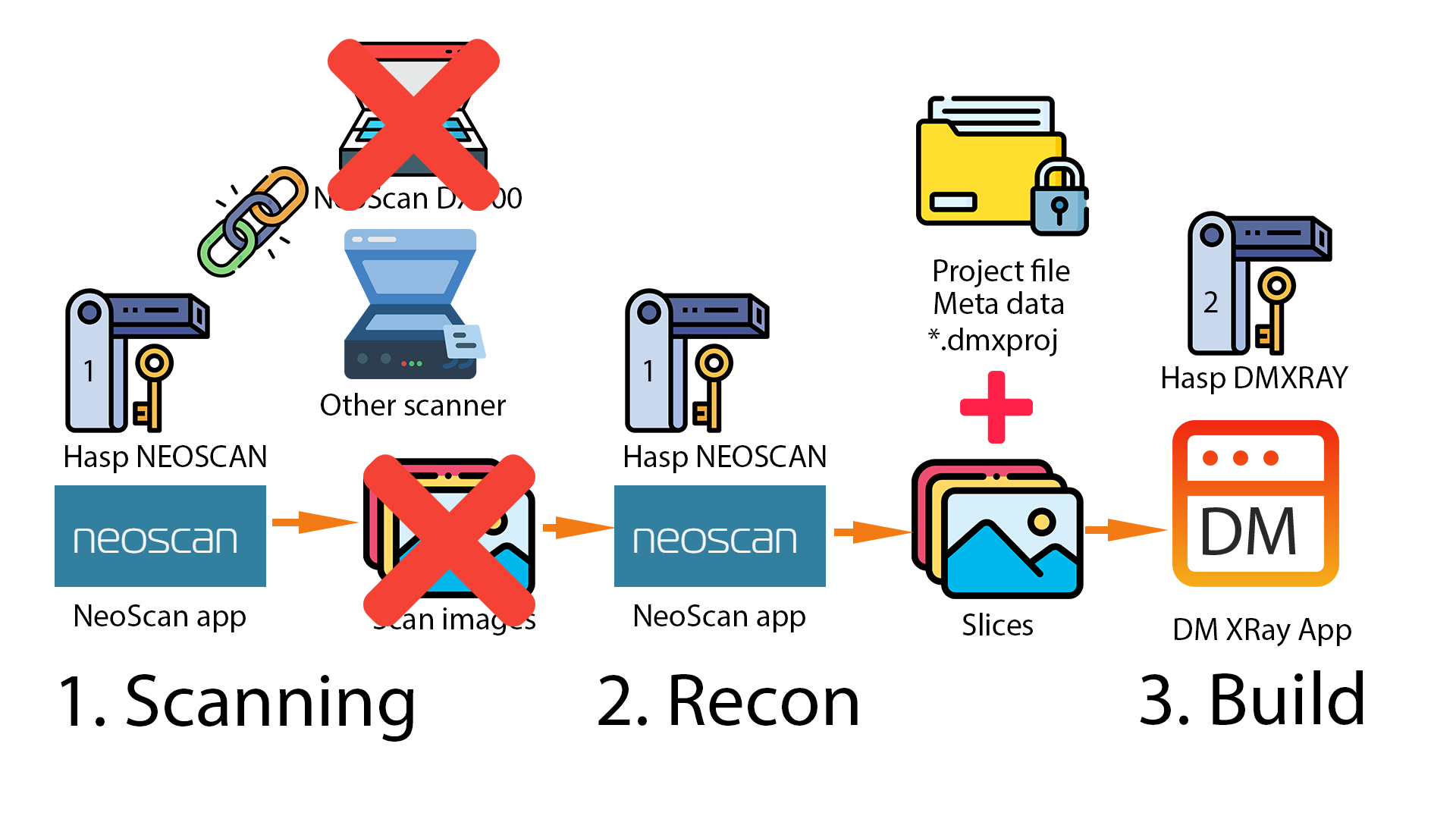Starting from the release of this version of DM-XRay, there will be a change in the policy regarding the protection and distribution of new versions of DM-XRay software.
Essentially, there will be two branches of DM-XRay software. The first branch will be intended for working with Neoscan project files in an open format (the so-called log file and a set of reconstructed voxel cube slices). Essentially, these are all programs of version 1.2.0.51 and below. Our goal is to minimize the number of such software versions so that essentially only clients working with Bruker scanners use it.
The second branch of the software, called DM-XRay Neoscan, will only accept encrypted .dmxproj projects and a set of reconstructed slices. It works with a new type of HASP key, which is not compatible with the program from the first branch. Protected projects are generated by the new Neoscan software using a paired HASP key. At the moment, the new Neoscan software only works with the Neoscan DX100 scanner, but gradually we will transition the operation with older Neoscan N70/N80 scanners to the new protection scheme.
What is the new protection scheme and what is its purpose? Our goal is for the DM-XRay Neoscan license to be tied not only to a specific DM-XRay HASP key but also to a specific Neoscan scanner. To implement this scheme, two paired HASP keys are introduced. One - HASP Neoscan is for working with a Neoscan scanner on one computer (scanning on the scanner + reconstruction), generating encrypted .dmxproj projects as output. The second one - HASP DM-XRay, allows working with the new encrypted data format.
In addition:
- A .dmxproj project can only be opened by the paired DM-XRay key to HASP Neoscan, which was used to encrypt this project. That is, data from another scanner cannot be processed with the same DM-XRay license.
- The new Neoscan program generates encrypted data during scanning and reconstruction only if HASP Neoscan is inserted; otherwise, the data is saved in an open format, but it cannot be opened in the new DM-XRay Neoscan software.
- The keys also store information about the binding to a specific Neoscan scanner, so the Neoscan HASP must be inserted into the computer to which this specific scanner is connected.
Upon receipt of a new DX100 scanner for the client, the following steps are taken:
- The scanner is flashed to link it with HASP Neoscan using a special service program (currently, this process will be carried out remotely by Octonus employees).
- One HASP Neoscan is created to work with this scanner in the new Neoscan program.
- A paired HASP DM-XRay is created to process the Neoscan reconstruction results obtained on this scanner.
For current clients of other Neoscan scanners (N70/N80), a similar transition scheme to the new version of DM-XRay Neoscan and encrypted format will be implemented during this year. This will require software updates for Neoscan, and the transition will take place at the end of the annual DM-XRay license (first branch of the software).
For clients using Bruker scanners, there are no plans to transition to DM-XRay Neoscan; licenses for the first branch of DM-XRay software will be extended.
Also, all new software features, for example, batch processing mode for Melee, will only be supported in the new DM-XRay Neoscan branch. So, versions of DM-XRay 1.3.3.55 and 1.3.4.56 become deprecated, now for batch conversion we use the second branch DM Xray Neoscan 2.0.1.58. Bug fixes will be released only in the first branch of the software.



